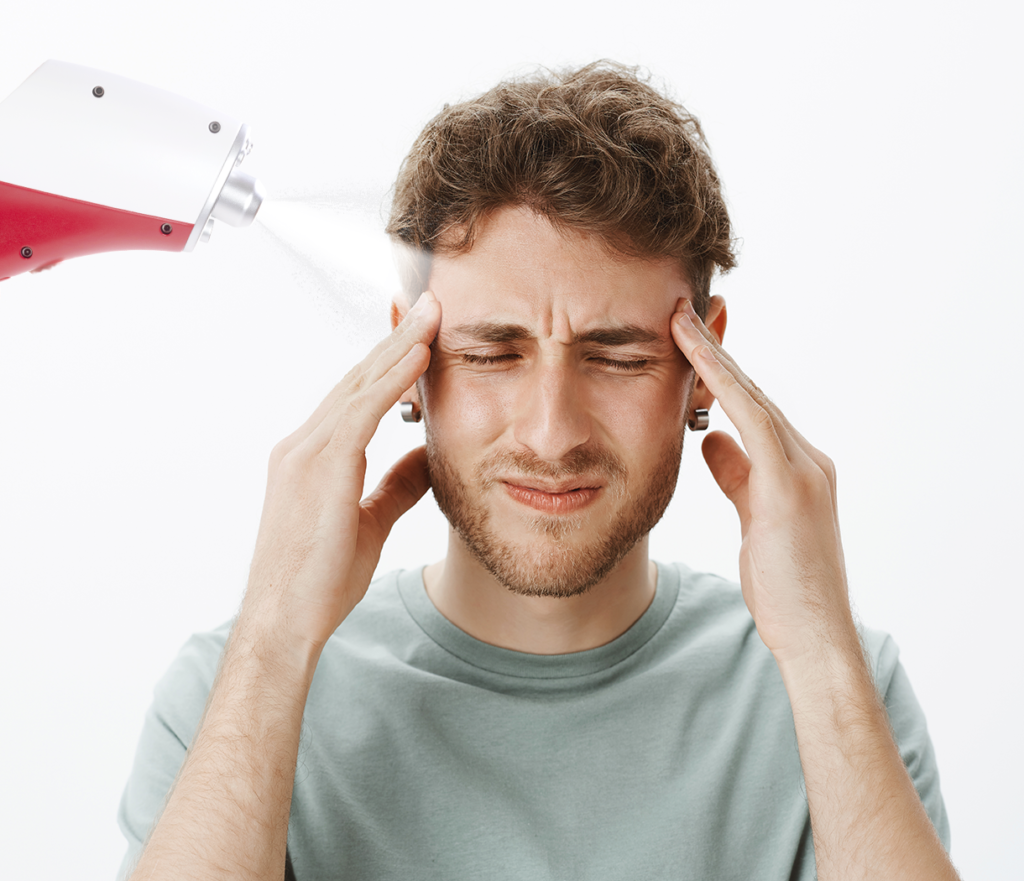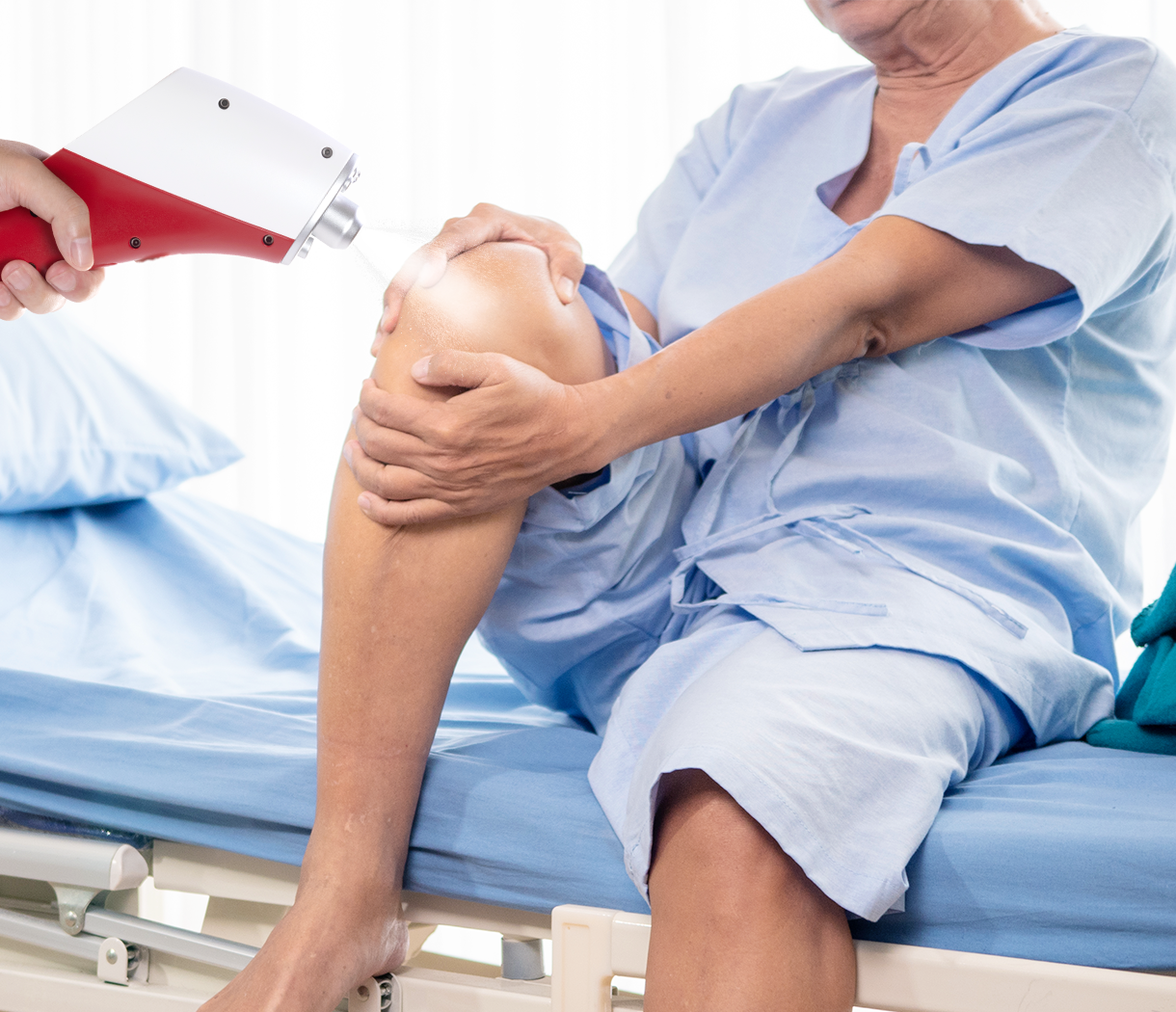Introduzione
In today’s fast-paced world, stress, chronic fatigue, and mental fog affect millions, from corporate professionals to athletes. CO₂ cryotherapy has emerged as a promising, non-pharmaceutical solution, delivering controlled cold via pressurized carbon dioxide to trigger the body’s adaptive healing responses. Unlike whole-body cryotherapy or ice packs, this localized approach stimulates physiological cascades that support both physical recovery and mental wellness. By enhancing circulation, reducing inflammation, and activating cellular repair, CO₂ cryotherapy helps combat fatigue, relieve stress, and improve cognitive clarity. As research confirms its multifaceted benefits, the treatment is moving from niche athletic recovery into mainstream wellness, available in clinics, rehabilitation centers, and even home settings. Understanding how it works, who benefits most, and how to optimize sessions empowers individuals to make informed wellness choices.
Capire la crioterapia CO₂
Before exploring the specific benefits for stress, fatigue, and mental clarity, establishing a foundational understanding of CO₂ cryotherapy technology and mechanisms is essential. This knowledge illuminates why this particular form of cold therapy produces effects distinct from other cryotherapy modalities.
La scienza alla base della crioterapia CO₂
Crioterapia CO₂ operates through controlled application of pressurized carbon dioxide gas that rapidly expands upon release, achieving temperatures of -78°C (-108°F) at the point of application. This extreme cold creates immediate thermal shock to localized tissue areas, triggering vasoconstriction followed by reactive vasodilation—a process called the “hunting response.” The technology differs fundamentally from whole-body cryotherapy chambers that use nitrogen gas to cool air temperature, or traditional ice applications that gradually reduce tissue temperature. Modern CO₂ cryotherapy devices incorporate precision targeting systems, often utilizing red laser guidance to ensure accurate application to specific anatomical structures, muscles, or pain points.
Mechanisms of Action: Circulation, Oxygen Delivery, and Cellular Recovery
The therapeutic effects of CO₂ cryotherapy stem from multiple interconnected physiological mechanisms. Initial vasoconstriction reduces blood flow to treated areas, minimizing inflammation and metabolic activity. Upon warming, compensatory vasodilation increases blood flow beyond baseline levels, delivering oxygen-rich blood and nutrients while facilitating metabolic waste removal. This enhanced circulation supports cellular recovery and mitochondrial function. Additionally, extreme cold slows nerve conduction velocity, effectively interrupting pain signal transmission and reducing nociceptor sensitivity. The thermal shock also triggers release of endogenous opioids and anti-inflammatory cytokines, creating systemic effects that extend beyond the localized treatment area. These mechanisms collectively support both physical recovery and neurological function.
Short-Term and Long-Term Effects
Immediate short-term effects of CO₂ cryotherapy manifest within seconds to minutes of application and include acute pain relief, reduced muscle spasm, decreased inflammation, and temporary numbness. Treatment duration typically ranges from 10-15 seconds per application site, with effects becoming noticeable within this brief timeframe. These immediate benefits make CO₂ cryotherapy particularly valuable for acute injury management and pre-activity preparation. Long-term effects develop through consistent application protocols and include improved baseline circulation, enhanced tissue resilience, reduced chronic inflammation markers, normalized nervous system regulation, and potentially improved mitochondrial efficiency. Regular treatments may also support neuroplasticity and stress response adaptation, contributing to sustained improvements in mental wellbeing.
Physical Benefits of CO₂ Cryotherapy
The physical benefits of CO₂ cryotherapy create the foundation upon which mental and cognitive improvements develop. Understanding these somatic effects illuminates the body-mind connection central to cryotherapy’s comprehensive benefits.
Reducing Muscle Fatigue and Enhancing Recovery
CO₂ cryotherapy significantly accelerates muscle recovery following physical exertion by addressing multiple fatigue mechanisms simultaneously. The rapid cooling reduces exercise-induced inflammation and microtrauma accumulation that contribute to delayed-onset muscle soreness (DOMS). Enhanced post-treatment circulation facilitates lactate clearance and metabolic waste removal, preventing accumulation of fatigue-inducing compounds. The thermal shock also stimulates muscle protein synthesis pathways and reduces oxidative stress markers. Athletes utilizing CO₂ cryotherapy report decreased recovery time between training sessions, maintained performance capacity across consecutive workouts, and reduced subjective fatigue perception. These benefits extend beyond athletic populations to anyone experiencing physical fatigue from occupational demands, chronic conditions, or daily activities requiring sustained muscular effort.
Improving Circulation and Reducing Cold Extremities (Hands and Feet)
Paradoxically, strategic application of extreme cold through CO₂ cryotherapy can improve chronic circulation problems, particularly in peripheral extremities. The treatment triggers robust vasomotor responses that strengthen vascular reactivity—the blood vessels’ ability to constrict and dilate appropriately in response to various stimuli. Regular cryotherapy sessions may recalibrate dysfunctional autonomic regulation of peripheral circulation, common in conditions like Raynaud’s phenomenon or diabetes-related microvascular complications. The enhanced nitric oxide production following cryotherapy supports endothelial function and vasodilation capacity. Many individuals with chronically cold hands and feet report improved baseline warmth and reduced sensitivity to cold environments after consistent cryotherapy protocols, suggesting lasting vascular adaptation beyond immediate treatment effects.
Boosting Energy Levels and Combating Chronic Fatigue
CO₂ cryotherapy addresses chronic fatigue through multiple complementary pathways that extend beyond simple physical recovery. The treatment stimulates sympathetic nervous system activation, triggering catecholamine release (adrenaline and noradrenaline) that increases alertness and energy perception. Enhanced mitochondrial function resulting from improved oxygen delivery and reduced oxidative stress supports cellular energy production through more efficient ATP synthesis. The normalization of inflammatory cytokines, often elevated in chronic fatigue conditions, reduces the inflammatory burden that contributes to persistent tiredness. Additionally, cryotherapy’s effects on sleep quality and circadian rhythm regulation support natural energy restoration. Individuals with chronic fatigue syndrome, fibromyalgia, or general exhaustion report sustained energy improvements with regular treatment protocols.
Supporting Detoxification and Metabolic Health
CO₂ cryotherapy supports the body’s natural detoxification processes through enhanced lymphatic drainage and metabolic activation. The vasoconstriction-vasodilation cycle stimulates lymphatic vessel contraction, improving lymph flow and facilitating removal of cellular debris, inflammatory mediators, and metabolic byproducts. This enhanced clearance reduces the toxic burden on tissues and organs. The metabolic activation following cryotherapy increases basal metabolic rate temporarily, supporting more efficient nutrient utilization and waste processing. Some evidence suggests cryotherapy may improve insulin sensitivity and glucose metabolism, though research continues in this area. The reduction in systemic inflammation markers following regular treatments also supports liver and kidney function, the body’s primary detoxification organs, by reducing their inflammatory burden.
Mental and Cognitive Benefits
The mental and cognitive benefits of CO₂ cryotherapy represent some of its most compelling yet underappreciated advantages. These effects arise from the intimate connection between physical physiology and neurological function.
Stress Reduction Through Increased Oxygenation and Endorphin Release
CO₂ cryotherapy provides powerful stress reduction through both biochemical and physiological mechanisms that target the hypothalamic-pituitary-adrenal (HPA) axis and sympathetic nervous system. The intense cold exposure triggers substantial endorphin and enkephalin release—the body’s natural opioid peptides that create feelings of wellbeing and euphoria while modulating stress perception. Enhanced cerebral blood flow following treatment improves oxygen delivery to brain tissue, supporting optimal neuronal function and reducing stress-induced cognitive impairment. The treatment also appears to normalize cortisol patterns, reducing chronically elevated stress hormones while improving the cortisol awakening response. Many users report immediate stress relief and sustained improvements in stress resilience with regular protocols, making cryotherapy a valuable non-pharmaceutical stress management tool.
Enhancing Mental Clarity and Focus
Mental clarity and cognitive focus improvements represent significant benefits for individuals struggling with brain fog, attention deficits, or cognitive fatigue. The enhanced cerebral circulation following CO₂ cryotherapy delivers oxygen and glucose—the brain’s primary fuel sources—more efficiently to neural tissue. This improved metabolic support enhances neurotransmitter synthesis and synaptic function, supporting faster information processing and improved attention capacity. The reduction in systemic inflammation decreases neuroinflammation, which increasingly appears central to cognitive dysfunction. The catecholamine release triggered by cold exposure enhances prefrontal cortex activation, the brain region responsible for executive functions including planning, decision-making, and sustained attention. Users frequently report sharper thinking, improved productivity, and reduced mental fatigue following treatments.
Mood Improvement and Anxiety Relief
CO₂ cryotherapy demonstrates promising effects on mood regulation and anxiety reduction through multiple neurobiological pathways. The substantial endorphin release creates immediate mood elevation and feelings of accomplishment, while the dopamine and serotonin modulation supports sustained mood improvements. The treatment appears to activate the parasympathetic nervous system following initial sympathetic activation, promoting relaxation and anxiety reduction. Regular cryotherapy may improve vagal tone—a marker of parasympathetic function and emotional regulation capacity. The physical accomplishment of tolerating intense cold also provides psychological benefits, enhancing self-efficacy and emotional resilience. Clinical observations suggest potential benefits for individuals with depression, anxiety disorders, and stress-related mood disturbances, though controlled research continues to establish definitive protocols.
Better Sleep and Recovery for Mental Health
Quality sleep represents perhaps the most crucial factor in mental health maintenance, and CO₂ cryotherapy appears to support multiple aspects of sleep architecture and circadian rhythm regulation. The treatment’s effects on core body temperature regulation—briefly elevating then allowing deeper cooling—may support the natural temperature drop necessary for sleep initiation. The reduction in pain and physical discomfort removes common sleep barriers for many individuals. The normalization of cortisol rhythms supports proper circadian alignment, with appropriate elevation in morning and suppression at night. Users report falling asleep faster, experiencing deeper sleep stages, and waking more refreshed. The bidirectional relationship between sleep and mental health means these improvements create positive cascades for mood, cognition, and stress resilience.
Specific Conditions and Populations That Benefit
While CO₂ cryotherapy offers broad benefits, certain populations and conditions demonstrate particularly significant responses to treatment. Understanding these specific applications helps individuals determine whether cryotherapy suits their needs.
Athletes and Post-Workout Recovery
Athletes represent perhaps the most extensively studied population regarding cryotherapy benefits, with compelling evidence supporting its integration into recovery protocols. CO₂ cryotherapy accelerates recovery from intense training by reducing exercise-induced muscle damage, inflammation, and oxidative stress. The treatment minimizes DOMS severity, allowing athletes to maintain higher training volumes and frequencies without accumulated fatigue. Application immediately post-exercise appears most effective, capitalizing on the acute inflammatory window. Beyond physical recovery, the mental clarity and stress reduction benefits support the psychological demands of competitive athletics. Professional and amateur athletes across disciplines—from endurance sports to strength training—increasingly incorporate cryotherapy as standard recovery practice, reporting improved performance consistency and reduced injury rates.
Individuals with Chronic Fatigue or Low Energy
Individuals experiencing chronic fatigue, whether from diagnosed conditions like chronic fatigue syndrome (CFS) or general persistent tiredness, often find significant relief through CO₂ cryotherapy protocols. The treatment addresses multiple fatigue contributors simultaneously: reducing inflammatory burden, enhancing mitochondrial function, normalizing autonomic dysfunction, and improving sleep quality. The immediate energy boost from catecholamine release provides relief from acute fatigue episodes, while regular treatments may support sustained energy improvements. The non-pharmaceutical nature makes cryotherapy particularly appealing for this population, many of whom experience limited benefits from conventional medical interventions. Treatment protocols typically involve multiple sessions weekly for several weeks before assessing response, as cumulative benefits often exceed individual session effects.

People Experiencing Stress or Cognitive Fatigue
Corporate professionals, students, and others experiencing chronic stress or cognitive demands represent a growing cryotherapy user population. The treatment offers rapid stress relief and mental clarity enhancement that fits busy schedules, with sessions completed in minutes. The immediate cognitive benefits support productivity and decision-making quality, while regular treatments build stress resilience and reduce burnout risk. The physical nature of the intervention also provides valuable contrast to primarily sedentary, cognitively-focused work, creating physiological stress relief that purely psychological interventions may not achieve. Users report the treatment provides more substantial and lasting benefits than caffeine or other stimulants, without associated dependency or tolerance development. The combination of physical and mental benefits makes cryotherapy uniquely suited to modern stress patterns.
Older Adults Seeking Circulation and Cognitive Support
Aging populations face numerous challenges that CO₂ cryotherapy may help address, including declining circulation, reduced cognitive function, chronic inflammation, and decreased mobility. The treatment’s circulatory benefits combat age-related vascular changes and support tissue health throughout the body and brain. The anti-inflammatory effects may slow cognitive decline associated with neuroinflammation and support healthier aging. Enhanced circulation to extremities improves comfort and function, reducing fall risk from numbness or weakness. The mood and sleep benefits address common quality-of-life concerns in older adults. Safety considerations require careful assessment, particularly regarding cardiovascular status and cold sensitivity, but appropriate protocols appear well-tolerated. Many older adults report improved vitality, cognitive function, and physical capability with regular treatments.
How to Maximize Benefits
Optimizing CO₂ cryotherapy benefits requires understanding proper protocols, complementary interventions, and preparation strategies. These considerations significantly influence treatment outcomes and safety.
Frequency and Duration of CO₂ Cryotherapy Sessions
Optimal treatment frequency and session parameters depend on individual goals, baseline health status, and specific conditions being addressed. For acute injury or intense fatigue, daily treatments or even multiple daily applications to specific areas may be appropriate. For general wellness, stress management, and cognitive enhancement, protocols typically involve 2-4 sessions weekly. Each application to a specific body area typically lasts 10-15 seconds, with the extreme cold (-78°C) creating immediate effects without requiring prolonged exposure. Total session duration varies based on the number of treatment areas but generally remains under 30 minutes. Many practitioners recommend initial intensive phases (daily treatments for 1-2 weeks) followed by maintenance schedules. Response assessment after 4-6 weeks helps determine optimal long-term protocols.
Combining Cryotherapy with Exercise, Nutrition, and Hydration
Hydrate before and after sessions to support circulation and lymph flow.
Consume protein to aid muscle recovery and synthesis.
Include antioxidant-rich foods to reduce oxidative stress.
Post-exercise cryotherapy reduces inflammation.
Pre-exercise cryotherapy may enhance circulation and performance.
Stress reduction and better sleep support exercise and nutrition consistency.
Pre-Session Preparation: Hydration and Avoiding Certain Medications
Drink enough water before treatment for optimal circulation.
Keep the treatment area clean, dry, and lotion-free.
Disclose all medications and supplements to practitioners.
Avoid blood thinners and vasoactive medications unless cleared.
Seek medical clearance for cardiovascular issues, cold sensitivity, neuropathy, or pregnancy.
Mentally prepare for the brief, intense cold.
Post-Session Care for Optimal Recovery
Allow natural rewarming; avoid external heat sources.
Perform gentle movement to support circulation.
Continue hydrating to aid recovery.
Eat a light meal with protein and complex carbs.
Monitor for unusual reactions like prolonged redness or pain.
Avoid alcohol, NSAIDs, and anti-inflammatories immediately after.
Expert Insights and Real Experiences
Professional perspectives and user experiences provide valuable context for understanding CO₂ cryotherapy’s practical applications and outcomes. These insights bridge scientific theory and real-world implementation.
Dermatologists, Physiotherapists, and Wellness Experts Opinions
Healthcare professionals across multiple disciplines increasingly recognize CO₂ cryotherapy’s therapeutic potential. Physiotherapists emphasize its value for acute injury management and rehabilitation acceleration, noting faster recovery timelines compared to traditional modalities. Sports medicine physicians appreciate the non-pharmaceutical pain management and performance support it provides. Mental health professionals express interest in its stress reduction and mood enhancement effects, particularly for patients seeking alternatives to medications. Wellness practitioners highlight its integration potential within comprehensive health optimization programs. Most experts emphasize that optimal outcomes require proper patient selection, individualized protocols, and realistic expectation setting. They note that while research continues expanding, existing evidence combined with clinical observations supports cryotherapy’s role in modern healthcare and wellness approaches.
Real-Life Testimonials from Users with Stress and Fatigue
Individual experiences with CO₂ cryotherapy for stress and fatigue reveal patterns of significant benefit across diverse populations. Corporate professionals report managing deadline stress more effectively and maintaining focus through demanding workdays. Parents managing family and career responsibilities describe improved energy and patience. Chronic fatigue sufferers note gradual but meaningful energy improvements that conventional treatments failed to provide. Students report enhanced concentration during study periods and reduced anxiety before examinations. Many users emphasize the rapid, noticeable effects that build confidence in the treatment approach. Common themes include better sleep quality, improved mood stability, increased physical energy, sharper mental clarity, and enhanced stress resilience. Most note that consistent treatment schedules produce superior results compared to sporadic use.
Research Findings on CO₂ Cryotherapy Benefits
Scientific research on CO₂ cryotherapy, while still expanding, demonstrates promising findings across multiple outcome measures. Studies document significant reductions in inflammatory biomarkers including C-reactive protein, interleukin-6, and tumor necrosis factor-alpha following treatment protocols. Research examining athletic populations consistently shows reduced recovery time, decreased muscle soreness, and maintained performance capacity. Neurological studies reveal increased cerebral blood flow and enhanced cognitive performance on attention and executive function tasks post-treatment. Mental health research demonstrates mood improvements and anxiety reduction comparable to some pharmaceutical interventions. Sleep studies show improved sleep onset, deeper sleep stages, and enhanced sleep efficiency. Metabolic research indicates temporary metabolic rate elevation and potential insulin sensitivity improvements. Most studies emphasize safety when proper protocols and screening are implemented.
Conclusione
La crioterapia CO₂ è a versatile, non-pharmaceutical therapy that addresses stress, fatigue, and mental clarity through precise cold exposure (-78°C) for brief durations. It triggers vasoconstriction followed by reactive vasodilation, enhancing circulation, oxygen delivery, waste removal, and reducing inflammation and pain. These physical effects support mental benefits, including stress relief, improved focus, mood, and sleep. Benefiting athletes, professionals, chronic fatigue sufferers, and aging adults, it integrates well with holistic wellness approaches involving proper nutrition, hydration, exercise, and sleep. Optimal outcomes depend on frequency, timing, and pre- and post-session care. As research grows and technology becomes more accessible, CO₂ cryotherapy is moving from a niche recovery tool to mainstream wellness intervention. By addressing both physical and cognitive needs, it offers a practical, evidence-based solution for enhancing energy, reducing stress, and supporting mental clarity in modern life.



